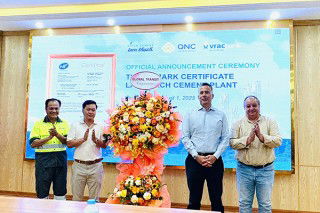Cement consumption in Indonesia was up by 3.1 per cent in the three months to June, but the national figures belie the patchiness of regional growth.
According to the Jakarta Post, statistics from the Indonesian Association of Cement (ASI) show that demand in Java actually declined – albeit by just 0.13 per cent – whereas consumption in Sumatra grew by 6.8 per cent, twice as fast as the national average.
The uneven distribution of growth has implications for Indonesia’s cement firms. Sumatra-focussed Semen Baturaja saw its revenues rise by 3.0 per cent to IDR652bn (US$50m), while market leaders Semen Indonesia and Indocement both saw revenues decline.
"Infrastructure projects in Palembang [capital of South Sumartra] are massive because the city will host the Asian Games in 2018. Roads, bridges and buildings are being built," Semen Baturaja director, Pamudji Rahardjo, told investors last week.
Semen Indonesia’s sales volumes were up 1.2 per cent to 13.82Mt for 1H2016, but revenues fell by 1.3 per cent to IDR12.5tn (US$950m). The firm has formed a subsidiary – Semen Indonesia International – to develop exports to destinations including Myanmar and Bangladesh.
Semen Indonesia’s president direct, Rizkan Chandra, said: “We're optimistic about facing the second semester and reaching the target [of five per cent sales growth] by approaching countries with low cement supplies and touching on downstream businesses".
Indocement saw its sales volumes fall by 2.3 per cent to 8.1Mt for 1H2016, although its profits were up by 5.2 per cent at IDR2.4tn (US$180m).
